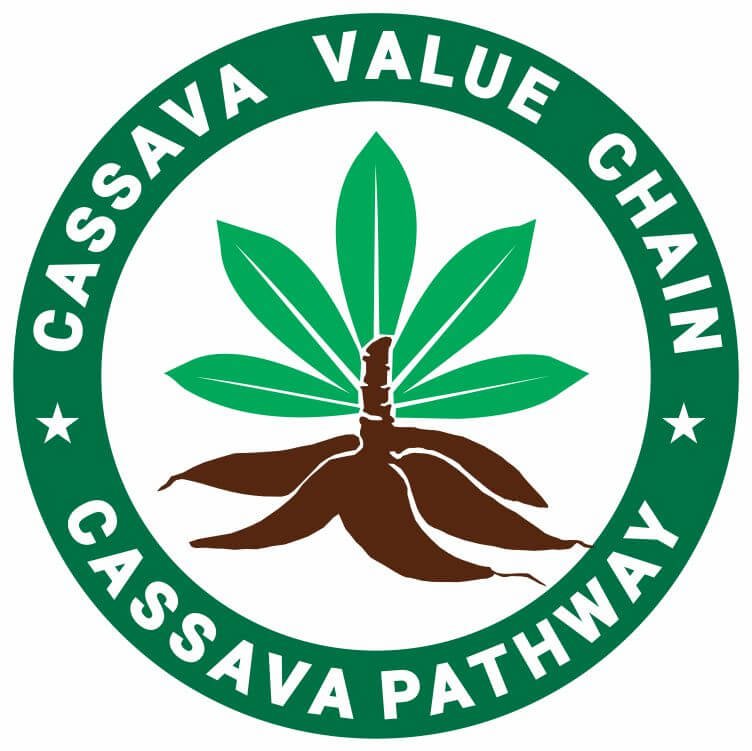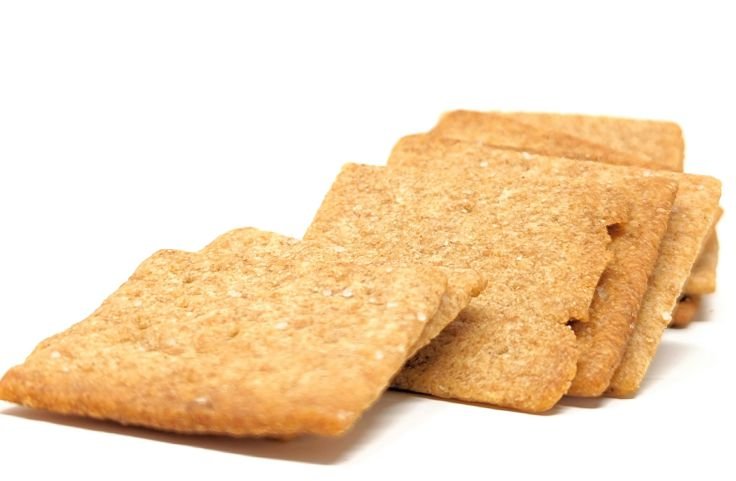Tapioca crackers crisp up into a light, golden treat with endless flavor twists. See how simple ingredients can turn into a crunchy snack with surprising health perks.
Tapioca crackers are more than just a crunch on your snack table. Their airy bite and golden finish make them an irresistible treat, light on the palate but rich in tradition.
You might know them from street stalls or festive spreads, crisped to perfection and served with spicy sambals or sweet sauces.
Made from cassava starch, these crackers cater to gluten-free diets without sacrificing taste.
They’re not complicated to make either. With the right method, you can transform simple starch into something surprisingly satisfying.
In this post, you’ll walk through what makes tapioca crackers stand out, how to prepare them at home, and the countless ways you can enjoy them.
Whether fried, baked, or puffed, tapioca crackers always find a way to steal the spotlight on the plate and in your mouth.
Related Posts
How to Make Tapioca Crepes at Home
Crispy And Chewy Tapioca Waffles
How to Make Soft and Chewy Tapioca Tortillas
Tapioca Puffs: Step-by-step Guide
Sabudana Khichdi Calories and its Health Information
Tapioca Chips Recipes for a Crunchy Bite
What Are Tapioca Crackers?
Tapioca crackers are light, crunchy snacks made from the starch of the cassava plant, not the whole root. Unlike cassava crackers, which are made from the whole root, they’re crisp, airy, and perfect for dipping.
Popular in Southeast Asia, especially Indonesia, Thailand, and Malaysia, they’re served with spicy sambals, rich curries, or enjoyed solo.
Their unique texture and flavor make them a standout snack with global appeal, offering a satisfying crunch in every bite.
How Tapioca Crackers Are Made: A Simple Look at the Process
Tapioca crackers come from cassava roots, shaped by hands or machines, and finished with either a sizzle or a bake. Here’s how they get from root to crisp.
From Root to Starch: Where It All Begins
Start with freshly harvested cassava roots. After peeling and washing, they’re crushed and squeezed to extract a soft, white starch.
This fine powder becomes your tapioca base, pure, plant-based, and ready for the next stage where creativity, flavor, and technique come together to make something amazing.
Mix and Flavor: Turning Starch into Dough
The transformation begins with water and salt. You mix until it becomes smooth, stretchy dough.
Add your choice of seasoning, garlic, chili, shrimp powder, anything that brings it to life.
This step is where you inject personality into the cracker, and every batch can tell a different story.
Steam and Shape: The Texture Matters
Steaming the dough adds strength and bounce, making it easier to roll and cut into perfect slices.
You control the thickness, thin for a light crisp or thick for a chewy snap.
Whether handmade or machine-rolled, this step shapes the texture of your final bite.
Dry It Out: Lock in the Crunch
Now the crackers need time. Drying removes moisture so they fry or bake without turning soggy.
Sun-drying can take a day, while a dehydrator speeds things up.
The drier the slice, the sharper the crunch. This is where patience turns into a perfect, crunchy payoff in every piece.
Fry or Bake: Your Snack, Your Style
Time to choose your method. Fry for a deep, rich crunch, or bake for something light and airy.
Both methods finish the cracker with a satisfying snap.
Once cooled, your handmade tapioca crackers are ready, crispy, flavored to your taste, and made entirely by you.
Regional Variations and Popular Types
Tapioca crackers aren’t limited to one taste or place.
Different cultures have made them their own, using local spices and ingredients to turn this humble snack into something you’ll keep reaching for.
Indonesian kerupuk: bold flavor with every bite
You’ll find Indonesia’s kerupuk in nearly every local market or roadside stall.
Made from tapioca flour and blended with shrimp, garlic, or fiery chili, these crackers pack a punch.
The prawn variety hits you with umami, while the spicy ones bring real heat.
Dip them in sambal or eat them plain, you’re in for something crunchy and bold.
Kerupuk isn’t just a snack in Indonesia. It’s a staple at the table, always there to add texture and taste to your plate.
Thai khao tan: nutty crunch with a spicy edge
Thailand’s version, khao tan, makes snacking feel thoughtful.
Made with puffed rice and tapioca starch, these crackers carry the warmth of toasted sesame and the kick of dried chili.
They balance nutty flavors with heat, which works well with creamy Thai curries or as a snack on their own.
Their light texture doesn’t compete with meals but adds a crisp contrast.
Add a dip, and you’ve got something that satisfies both crunch cravings and spice lovers.
Indian wafers: layered with spice and culture
If you love spice, India’s tapioca wafers will call to you. Cumin, chili, and turmeric give each bite a burst of layered flavor.
These crackers aren’t shy; they bring boldness to the table. Whether plain or spiced, they go well with chutneys or even your afternoon tea.
Found across Indian households and markets abroad, they’re more than just snacks, they’re a taste of India’s love for texture, flavor, and heritage in every bite.
Tapioca Crackers vs Cassava Crackers: What You Should Know
Tapioca crackers and cassava crackers come from the same root, but they’re not the same snack.
Their texture, flavor, nutrition, and how they’re made can make a big difference depending on what you enjoy or need in your diet.
Texture: Crunchy Air vs Firm Bite
Tapioca crackers puff up when cooked, giving them a crisp, airy crunch that snaps easily in your mouth.
Cassava crackers stay closer to the root’s natural structure, so they’re more solid and dense.
If you prefer a light crunch, go with tapioca. For something meatier, cassava wins.
Production Method: Refined Starch or Whole Root
Tapioca crackers come from the extracted starch of the cassava root. The starch is dried and processed before being formed into dough.
Cassava crackers skip this; whole roots are sliced or grated, seasoned, and baked or fried.
One uses a refined base, the other keeps things rustic.
Taste: Mild, Crisp, or Rooted Flavor
Tapioca crackers usually taste light and slightly nutty. They don’t compete with dips or seasonings.
Cassava crackers, however, carry more of the root’s natural earthiness. You’ll notice a richer, deeper flavor, especially if they’re seasoned.
Choose based on whether you want subtle or bold.
Nutrition: Fiber-Packed or Carb-Friendly
Tapioca crackers are lower in fiber and mostly pure starch, which means fast energy but little bulk.
Cassava crackers keep the fiber and some of the vitamins from the whole root.
So if you need fiber, go cassava. If you want easy carbs, tapioca fits.
Health and Nutrition Facts of Tapioca Crackers
Tapioca crackers can be more than just a snack. With the right choices, you get flavor and crunch without ignoring your health.
Here’s what you should know before your next bite:
Gluten-Free Goodness for Sensitive Guts
You don’t need to miss out on crunchy snacks just because you avoid gluten.
Tapioca crackers are naturally gluten-free, so you can enjoy them without worrying about bloating or stomach discomfort.
If you have celiac or gluten sensitivity, these are a smart pick.
Just be sure the label says “gluten-free” to avoid cross-contamination during processing, especially with store-bought brands.
Your gut will thank you for the peace and the crunch.
Energy Boost Without the Bloat
You need quick energy sometimes, and tapioca crackers deliver it fast.
They’re mostly carbs, which fuel your body when you’re running on low.
But here’s the key: go for air-fried or baked ones to keep the fat low.
Deep-fried versions can weigh you down with unnecessary grease.
If you’re keeping your snacks clean and light, this tweak makes all the difference. You’ll feel full, not fried.
Keep an Eye on Additives
You’ve probably seen those ingredient lists that go on forever. Some tapioca crackers include MSG or artificial preservatives that can mess with your system.
Skip the unwanted extras by reading the labels before buying. Better still, try making your own.
Use garlic, herbs, or even chili flakes for natural flavor without the junk. You’ll enjoy every bite knowing exactly what’s in it, and what’s not.
Homemade Control for a Healthier Crunch
You’ve got more power in the kitchen than you think. Making your tapioca crackers means total control over flavor and nutrition.
No preservatives, no additives, just real food. Blend in herbs like rosemary or sprinkle in sesame seeds.
Bake instead of fry, and you’ve got a crunchy treat that supports your health goals. It’s easy, clean, and satisfying.
Snacks feel better when you’ve made them your way.
How to Eat Tapioca Crackers
Tapioca crackers bring crunch and character to your meals or snack time.
Whether you’re dipping, munching, or adding texture to your dish, these crackers easily fit into your daily bites.
Eat Them Straight from the Bag: The Easiest Way to Snack
You don’t need to do anything fancy. Just open the pack and enjoy the light, crispy goodness right away.
They’re satisfying without being heavy, making them a great snack when you’re on the move or want something quick between meals.
Keep a pack in your bag, your desk drawer, or the kitchen counter. Their crunch hits the spot every time, no prep needed.
Pair with Dips for Bold, Flavorful Bites
Craving more flavor? Grab your favorite dip and get scooping. Tapioca crackers work perfectly with hummus, guacamole, or chili sauce.
Each dip adds a new layer of flavor while keeping the crackers’ texture intact.
This combo turns an everyday snack into something you’ll keep coming back for.
Perfect for parties, movie nights, or when regular chips just won’t do.
Add to Meals for Texture and Contrast
Use tapioca crackers to bring crunch to soups, stews, or rice-based dishes.
Drop them into a warm bowl of broth for contrast, or serve them next to fried rice for something crisp on the side.
Their lightness won’t weigh down the meal, and they easily blend into both traditional and modern dishes.
Add them just before serving to keep their texture fresh.
Use as a Garnish or Creative Topping
Turn everyday food into something special. Break them up and sprinkle on top of tacos, salads, or noodle bowls. Their snap adds interest to soft or saucy dishes.
You can even plate them with fresh ceviche or sliders at your next get-together.
They look great, taste better, and give your dishes something extra that makes people want more.
Making Tapioca Crackers at Home
Start with two cups of tapioca starch in a bowl. Gradually add half a cup of water while mixing.
Add salt, garlic powder, chili flakes, or dried herbs to taste. Mix until smooth and non-sticky. Knead with your hands or a spatula until the dough is moldable and firm.
Shape and Steam the Dough Disks
Divide the dough into balls and flatten them into thin disks. Steam them for 10 minutes until they’re firm but not too hard.
Let them cool slightly. Steaming helps set the structure, making them easier to slice later without falling apart.
Slice and Dry the Steamed Crackers
Slice the steamed disks into thin strips or any shape you like. Spread them on a tray.
Air-dry or use a low oven setting (around 200°F) for 20–30 minutes to remove moisture. This ensures they crisp up nicely when cooked.
Fry or Bake Until Golden and Crisp
To fry, heat oil and test a slice; if it sizzles, you’re ready. Fry in batches until puffed and golden.
For a lighter version, bake at 375°F for 15–20 minutes, turning once if needed. Keep an eye out to avoid burning.
Let Cool and Store in Airtight Containers
After cooking, cool the crackers on a rack to let them firm up. Store them in an airtight jar or container once they’re completely cool.
They’ll stay crispy for days. Perfect for snacking or serving with dips and sauces.
Conclusion
You now have everything you need to make tapioca crackers that taste great and crunch better.
From simple ingredients to bold flavor options, this snack gives you full control in the kitchen.
Whether you fry them golden or bake them light, every bite offers something satisfying.
They’re naturally gluten-free, quick to prepare, and easy to store for days of snacking.
You don’t need special tools or fancy skills, just patience, seasoning, and starch.
These crackers fit into everyday meals, party platters, or your late-night cravings.
Once you make them yourself, you’ll see why they stand out from the rest. Ready to make your first batch? Grab your ingredients and start today.
Frequently Asked Questions
Are tapioca crackers gluten-free?
Yes, tapioca crackers are naturally gluten-free since they’re made from tapioca starch, which is derived from cassava and contains no wheat or grain-based ingredients.
Can I make tapioca crackers without frying?
Yes, you can bake or air-fry tapioca crackers for a lighter version. They’ll still be crispy, though the texture may differ slightly from the traditional fried kind.
How long do homemade tapioca crackers last?
Homemade tapioca crackers can last up to one week when stored in an airtight container. Keep them in a cool, dry place to maintain their crunch.
Do tapioca crackers taste like cassava?
Tapioca crackers have a neutral, slightly starchy flavor. They don’t taste like whole cassava since they’re made from refined starch, not the full root itself.

Chimeremeze Emeh is a writer and researcher passionate about Africa’s most transformative root crop—cassava. Through his work at cassavavaluechain.com, he explores the entire cassava industry, from cultivation and processing to its diverse applications in food, health, and industrial use.
He also writes for palmoilpalm.com, where he shares his extensive experience and deep-rooted knowledge of palm oil, covering red palm oil, palm kernel oil, and refined products. His work there reflects his lifelong connection to agriculture and his commitment to promoting sustainable value chains in Africa.
Driven by curiosity and purpose, Chimeremeze aims to shed light on how cassava continues to empower communities, strengthen food systems, and link traditional farming wisdom with modern innovation.

